 Washington Nationals infielder Howie Kendrick recently tore his Achilles tendon in the first game of a doubleheader against the Los Angeles Dodgers. Kendrick was seen walking on crutches while wearing a walking boot in the Nationals’ clubhouse after the game. This is expected to be a season-ending injury for Kendrick and he states, “I really knew there was something wrong with it because I couldn't control my heel at all, so that's when I knew it was probably my Achilles.” He was immediately placed on the 10-day disabled list and was replaced on the roster by right-hander Jefry Rodriguez from the Nationals’ Double-A affiliate in Harrisburg.
Washington Nationals infielder Howie Kendrick recently tore his Achilles tendon in the first game of a doubleheader against the Los Angeles Dodgers. Kendrick was seen walking on crutches while wearing a walking boot in the Nationals’ clubhouse after the game. This is expected to be a season-ending injury for Kendrick and he states, “I really knew there was something wrong with it because I couldn't control my heel at all, so that's when I knew it was probably my Achilles.” He was immediately placed on the 10-day disabled list and was replaced on the roster by right-hander Jefry Rodriguez from the Nationals’ Double-A affiliate in Harrisburg.
Achilles tendon injuries need immediate attention to avoid future complications. If you have any concerns, contact Dr. Barbara Kilkenny of Barbara A. Kilkenny, DPM. Our doctor can provide the care you need to keep you pain-free and on your feet.
What Is the Achilles Tendon?
The Achilles tendon is a tendon that connects the lower leg muscles and calf to the heel of the foot. It is the strongest tendon in the human body and is essential for making movement possible. Because this tendon is such an integral part of the body, any injuries to it can create immense difficulties and should immediately be presented to a doctor.
What Are the symptoms of an Achilles Tendon Injury?
There are various types of injuries that can affect the Achilles tendon. The two most common injuries are Achilles tendinitis and ruptures of the tendon.
Achilles Tendinitis Symptoms
Rupture Symptoms
Treatment and Prevention
Achilles tendon injuries are diagnosed by a thorough physical evaluation, which can include an MRI. Treatment involves rest, physical therapy, and in some cases, surgery. However, various preventative measures can be taken to avoid these injuries, such as:
If you have any questions please feel free to contact our office located in Southbury, CT. We offer the newest diagnostic tools and technology to treat your foot and ankle needs.
Read more about What are Achilles Tendon Injuries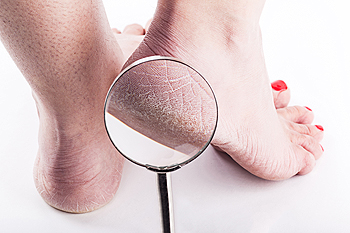 It is easy to forget to pay special attention to the heels of your feet when moisturizing. If there is an insufficient amount of moisture in the heels of our feet, they can crack easily. You may be prone to cracked feet if you are often dehydrated, take very hot showers, or excessively scrub your feet. Fortunately, there are some home remedies you can try if you are experiencing problems with cracked heels. This remedy involves both banana and coconut oil; both of these ingredients are known for their great moisturizing properties. In order to create the mixture, mix one ripe banana with a quarter cup of coconut oil and apply all over the feet. Let the mixture rest for 20 minutes before rinsing it off with cold water. This is a natural method that can be used to heal cracked feet. If you have any questions regarding cracked heels or are looking for advice on how to care for cracked heels, a consultation with a podiatrist is advised.
It is easy to forget to pay special attention to the heels of your feet when moisturizing. If there is an insufficient amount of moisture in the heels of our feet, they can crack easily. You may be prone to cracked feet if you are often dehydrated, take very hot showers, or excessively scrub your feet. Fortunately, there are some home remedies you can try if you are experiencing problems with cracked heels. This remedy involves both banana and coconut oil; both of these ingredients are known for their great moisturizing properties. In order to create the mixture, mix one ripe banana with a quarter cup of coconut oil and apply all over the feet. Let the mixture rest for 20 minutes before rinsing it off with cold water. This is a natural method that can be used to heal cracked feet. If you have any questions regarding cracked heels or are looking for advice on how to care for cracked heels, a consultation with a podiatrist is advised.
Cracked heels are unsightly and can cause further damage to your shoes and feet. If you have any concerns, contact Dr. Barbara Kilkenny from Barbara A. Kilkenny, DPM. Our doctor can provide the care you need to keep you pain-free and on your feet.
Cracked Heels
Cracked heels appear unappealing and can make it harder for you walk around in sandals. Aside from looking unpleasant, cracked heels can also tear stockings, socks, and wear out your shoes. There are several methods to help restore a cracked heel and prevent further damage.
How Do You Get Them?
Dry skin is the number one culprit in creating cracked heels. Many athletes, walkers, joggers, and even swimmers suffer from cracked heels. Age and skin oil production play a role to getting cracked heels as well.
Promote Healing
Over the counter medicines can help, especially for those that need instant relief or who suffer from chronic dry feet.
Wear Socks – Wearing socks with medicated creams helps lock in moisture.
Moisturizers – Applying both day and night will help alleviate dryness which causes cracking.
Pumice Stones – These exfoliate and remove dead skin, which allows for smoother moisturizer application and better absorption into the skin.
Change in Diet
Eating healthy with a well-balanced diet will give the skin a fresh and radiant look. Your body responds to the kinds of food you ingest. Omega-3 fatty acids and zinc supplements can also revitalize skin tissue.
Most importantly, seek professional help if unsure how to proceed in treating cracked heels. A podiatrist will help you with any questions or information needed.
If you have any questions, please feel free to contact our office located in Southbury, CT. We offer the newest diagnostic and treatment technologies for all your foot care needs.
Read more about Solutions for Cracked Heels A heel spur is a regeneration of a bone that forms on the sole of the foot. Additionally, the development of this ailment can appear in the area where the Achilles tendon connects to the heel and may produce severe pain. In most cases, a heel spur will gradually develop, and is often caused by strain experienced by the muscles and ligaments. Causes of this type of discomfort may originate from shoes that fit incorrectly, additional body weight the feet must endure, or an injury that caused the heel to bruise. Paying close attention to the general health of the feet may be a successful prevention technique for heel spurs. This may include noticing any type of aches and pain that may appear, especially on the sole of the foot. Moderate relief may be obtained from resting the foot in addition to performing gentle stretching exercises. It’s suggested to consult with a podiatrist for treatment options for heel spurs, which may include surgery.
A heel spur is a regeneration of a bone that forms on the sole of the foot. Additionally, the development of this ailment can appear in the area where the Achilles tendon connects to the heel and may produce severe pain. In most cases, a heel spur will gradually develop, and is often caused by strain experienced by the muscles and ligaments. Causes of this type of discomfort may originate from shoes that fit incorrectly, additional body weight the feet must endure, or an injury that caused the heel to bruise. Paying close attention to the general health of the feet may be a successful prevention technique for heel spurs. This may include noticing any type of aches and pain that may appear, especially on the sole of the foot. Moderate relief may be obtained from resting the foot in addition to performing gentle stretching exercises. It’s suggested to consult with a podiatrist for treatment options for heel spurs, which may include surgery.
Heel spurs can be incredibly painful and sometimes may make you unable to participate in physical activities. To get medical care for your heel spurs, contact Dr. Barbara Kilkenny from Barbara A. Kilkenny, DPM. Our doctor will do everything possible to treat your condition.
Heels Spurs
Heel spurs are formed by calcium deposits on the back of the foot where the heel is. This can also be caused by small fragments of bone breaking off one section of the foot, attaching onto the back of the foot. Heel spurs can also be bone growth on the back of the foot and may grow in the direction of the arch of the foot.
Older individuals usually suffer from heel spurs and pain sometimes intensifies with age. One of the main condition's spurs are related to is plantar fasciitis.
Pain
The pain associated with spurs is often because of weight placed on the feet. When someone is walking, their entire weight is concentrated on the feet. Bone spurs then have the tendency to affect other bones and tissues around the foot. As the pain continues, the feet will become tender and sensitive over time.
Treatments
There are many ways to treat heel spurs. If one is suffering from heel spurs in conjunction with pain, there are several methods for healing. Medication, surgery, and herbal care are some options.
If you have any questions feel free to contact our office located in Southbury, CT. We offer the latest in diagnostic and treatment technology to meet your needs.
Read more about Heel Spurs An uncomfortable ailment that could affect elderly people are foot cramps, and it's important to learn how to prevent them from developing. Research has shown that an effective remedy can be having a massage performed, as this will loosen and relax the muscles so they can return to their natural state. Cramps in the feet may indicate a vitamin deficiency, possibly a lack in potassium. Additionally, seniors may not be consuming adequate fluids during their daily activities, and experiencing foot cramps may be a result of this. The feet will typically benefit from wearing shoes that fit correctly, and this may also prevent cramping and general foot pain. Please consider scheduling a consultation with a podiatrist for an examination of your or your loved one’s feet.
An uncomfortable ailment that could affect elderly people are foot cramps, and it's important to learn how to prevent them from developing. Research has shown that an effective remedy can be having a massage performed, as this will loosen and relax the muscles so they can return to their natural state. Cramps in the feet may indicate a vitamin deficiency, possibly a lack in potassium. Additionally, seniors may not be consuming adequate fluids during their daily activities, and experiencing foot cramps may be a result of this. The feet will typically benefit from wearing shoes that fit correctly, and this may also prevent cramping and general foot pain. Please consider scheduling a consultation with a podiatrist for an examination of your or your loved one’s feet.
Proper foot care is something many older adults forget to consider. If you have any concerns about your feet and ankles, contact Dr. Barbara Kilkenny from Barbara A. Kilkenny, DPM. Our doctor can provide the care you need to keep you pain-free and on your feet.
The Elderly and Their Feet
As we age we start to notice many changes in our body, but the elder population may not notice them right away. Medical conditions may prevent the elderly to take notice of their foot health right away. Poor vision is a lead contributor to not taking action for the elderly.
Common Conditions
Susceptible Infections
Diabetes and poor circulation can cause general loss of sensitivity over the years, turning a simple cut into a serious issue.
If you have any questions please feel free to contact our office located in Southbury, CT. We offer the newest diagnostic and treatment technologies for all your foot and ankle needs.
Read more about Elderly and their Feet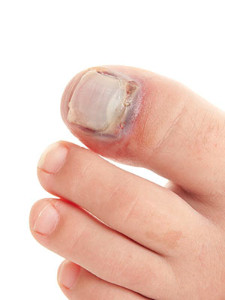 If you have the experience of something heavy falling on your foot, you may have what is referred to as a broken toe. Common signs from this occurring will be swelling and bruising affecting the toe and surrounding area, accompanied by severe pain. If the bone protrudes from the skin, this is typically known as an extreme fracture, and medical attention should be sought as soon as possible for treatment. If the break is not severe, the toe will benefit from being elevated, which may aid in reducing any obvious swelling. A common treatment technique involves bandaging the injured toe to the toe next to it, and this may promote stability and proper healing. It may be suggested to wear comfortable shoes with adequate room for the toes, and the use of crutches may be beneficial in keeping weight off the foot. If you feel you may have broken your toe, see a podiatrist immediately for a proper diagnosis and additional information.
If you have the experience of something heavy falling on your foot, you may have what is referred to as a broken toe. Common signs from this occurring will be swelling and bruising affecting the toe and surrounding area, accompanied by severe pain. If the bone protrudes from the skin, this is typically known as an extreme fracture, and medical attention should be sought as soon as possible for treatment. If the break is not severe, the toe will benefit from being elevated, which may aid in reducing any obvious swelling. A common treatment technique involves bandaging the injured toe to the toe next to it, and this may promote stability and proper healing. It may be suggested to wear comfortable shoes with adequate room for the toes, and the use of crutches may be beneficial in keeping weight off the foot. If you feel you may have broken your toe, see a podiatrist immediately for a proper diagnosis and additional information.
A broken toe can be very painful and lead to complications if not properly fixed. If you have any concerns about your feet, contact Dr. Barbara Kilkenny from Barbara A. Kilkenny, DPM. Our doctor will treat your foot and ankle needs.
What to Know About a Broken Toe
Although most people try to avoid foot trauma such as banging, stubbing, or dropping heavy objects on their feet, the unfortunate fact is that it is a common occurrence. Given the fact that toes are positioned in front of the feet, they typically sustain the brunt of such trauma. When trauma occurs to a toe, the result can be a painful break (fracture).
Symptoms of a Broken Toe
Generally, it is best to stay off of the injured toe with the affected foot elevated.
Severe toe fractures may be treated with a splint, cast, and in some cases, minor surgery. Due to its position and the pressure it endures with daily activity, future complications can occur if the big toe is not properly treated.
If you have any questions please feel free to contact our office located in Southbury, CT. We offer the newest diagnostic and treatment technologies for all your foot and ankle needs.
Read more about What to Know About a Broken Toe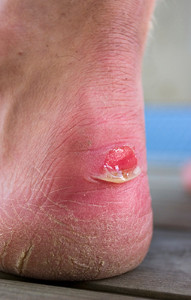 If you notice a small area filled with clear liquid on your foot, you may be observing what is referred to as a blister. It generally begins with a sore that appears to be red, and a blister will develop as pressure on the area continues. Common reasons for this condition to occur may include friction, which is often caused by poorly fitting shoes, in addition to burns, insect bites, or frostbite. Blisters naturally form to protect the damaged skin and will typically last for a few days. Research has shown that it’s beneficial to allow blisters to heal on their own, and this may prevent any bacteria or fungus from entering the body through the affected site. If you notice the fluid in the blister has turned a reddish or yellow color, it generally indicates an infection has developed, and it’s advised that medical attention be sought immediately. Please consult with a podiatrist for additional information about blisters on the feet.
If you notice a small area filled with clear liquid on your foot, you may be observing what is referred to as a blister. It generally begins with a sore that appears to be red, and a blister will develop as pressure on the area continues. Common reasons for this condition to occur may include friction, which is often caused by poorly fitting shoes, in addition to burns, insect bites, or frostbite. Blisters naturally form to protect the damaged skin and will typically last for a few days. Research has shown that it’s beneficial to allow blisters to heal on their own, and this may prevent any bacteria or fungus from entering the body through the affected site. If you notice the fluid in the blister has turned a reddish or yellow color, it generally indicates an infection has developed, and it’s advised that medical attention be sought immediately. Please consult with a podiatrist for additional information about blisters on the feet.
Blisters may appear as a single bubble or in a cluster. They can cause a lot of pain and may be filled with pus, blood, or watery serum. If your feet are hurting, contact Dr. Barbara Kilkenny of Barbara A. Kilkenny, DPM. Our doctor can provide the care you need to keep you pain-free and on your feet.
Foot Blisters
Foot blisters are often the result of friction. This happens due to the constant rubbing from shoes, which can lead to pain.
What Are Foot Blisters?
A foot blister is a small fluid-filled pocket that forms on the upper-most layer of the skin. Blisters are filled with clear fluid and can lead to blood drainage or pus if the area becomes infected.
Symptoms
(Blister symptoms may vary depending on what is causing them)
Prevention & Treatment
In order to prevent blisters, you should be sure to wear comfortable shoes with socks that cushion your feet and absorb sweat. Breaking a blister open may increase your chances of developing an infection. However, if your blister breaks, you should wash the area with soap and water immediately and then apply a bandage to the affected area. If your blisters cause severe pain it is important that you call your podiatrist right away.
If you have any questions, please feel free to contact our office located in Southbury, CT. We offer the newest diagnostic and treatment technologies for all your foot care needs.
Read more about Blisters on the Feet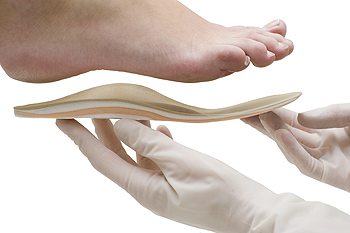 Corrective inserts that are designed to be used in shoes are often referred to as orthotics. There are several benefits to using orthotics, including providing comfort, stability, and additional support that the foot may need. They are typically used to correct certain foot abnormalities, including high arches, flat feet, or foot structures that may originate from a predisposed inherited gene. They are generally constructed of materials designed for the specific foot issue, which may be a high arch or specific heel injuries. If you have foot pain, there is a chance that orthotics may work for you. A podiatrist will be able to ascertain if orthotics are needed for your foot condition.
Corrective inserts that are designed to be used in shoes are often referred to as orthotics. There are several benefits to using orthotics, including providing comfort, stability, and additional support that the foot may need. They are typically used to correct certain foot abnormalities, including high arches, flat feet, or foot structures that may originate from a predisposed inherited gene. They are generally constructed of materials designed for the specific foot issue, which may be a high arch or specific heel injuries. If you have foot pain, there is a chance that orthotics may work for you. A podiatrist will be able to ascertain if orthotics are needed for your foot condition.
If you are having discomfort in your feet and would like to try orthotics, contact Dr. Barbara Kilkenny from Barbara A. Kilkenny, DPM. Our doctor can provide the care you need to keep you pain-free and on your feet.
What Are Orthotics?
Orthotics are inserts you can place into your shoes to help with a variety of foot problems such as flat feet or foot pain. Orthotics provide relief and comfort for minor foot and heel pain but can’t correct serious biomechanical problems in your feet.
Over-the-Counter Inserts
Orthotics come in a wide variety of over-the-counter inserts that are used to treat foot pain, heel pain, and minor problems. For example, arch supports can be inserted into your shoes to help correct overarched or flat feet, while gel insoles are often used because they provide comfort and relief from foot and heel pain by alleviating pressure.
Prescription Orthotics
If over-the-counter inserts don’t work for you or if you have a more severe foot concern, it is possible to have your podiatrist prescribe custom orthotics. These high-quality inserts are designed to treat problems such as abnormal motion, plantar fasciitis, and severe forms of heel pain. They can even be used to help patients suffering from diabetes by treating foot ulcers and painful calluses and are usually molded to your feet individually, which allows them to provide full support and comfort.
If you are experiencing minor to severe foot or heel pain, it’s recommended to speak with your podiatrist about the possibilities of using orthotics. A podiatrist can determine which type of orthotic is right for you and allow you to take the first steps towards being pain-free.
If you have any questions please contact our office located in Southbury, CT. We offer the newest diagnostic and treatment technologies for all your foot and ankle needs.
Read more about Foot Orthotics Gout is a form of arthritis, and there are several causes for this condition. If an excess amount of alcohol is frequently ingested, in addition to being overweight or having a predisposed inherited gene, gout may become a painful ailment to contend with. Food containing a large amount of purines, which may cause excess crystals to form and lodge in the joints, may be a source for this condition to occur. Extreme pain may become evident during an attack, accompanied with redness and swelling. Additional symptoms may include difficulty in moving the toe as a result of being stiff and tender. Bouts of this type of arthritis typically fade in 10 days, and recent research has suggested that there’s inconclusive evidence if and when another attack will reappear. If you are suffering from this affliction, please consult your podiatrist for prevention techniques, which may include dietary changes that are beneficial for you.
Gout is a form of arthritis, and there are several causes for this condition. If an excess amount of alcohol is frequently ingested, in addition to being overweight or having a predisposed inherited gene, gout may become a painful ailment to contend with. Food containing a large amount of purines, which may cause excess crystals to form and lodge in the joints, may be a source for this condition to occur. Extreme pain may become evident during an attack, accompanied with redness and swelling. Additional symptoms may include difficulty in moving the toe as a result of being stiff and tender. Bouts of this type of arthritis typically fade in 10 days, and recent research has suggested that there’s inconclusive evidence if and when another attack will reappear. If you are suffering from this affliction, please consult your podiatrist for prevention techniques, which may include dietary changes that are beneficial for you.
Gout is a foot condition that requires certain treatment and care. If you are seeking treatment, contact Dr. Barbara Kilkenny from Barbara A. Kilkenny, DPM. Our doctor will treat your foot and ankle needs.
What Is Gout?
Gout is a type of arthritis caused by a buildup of uric acid in the bloodstream. It often develops in the foot, especially the big toe area, although it can manifest in other parts of the body as well. Gout can make walking and standing very painful and is especially common in diabetics and the obese.
People typically get gout because of a poor diet. Genetic predisposition is also a factor. The children of parents who have had gout frequently have a chance of developing it themselves.
Gout can easily be identified by redness and inflammation of the big toe and the surrounding areas of the foot. Other symptoms include extreme fatigue, joint pain, and running high fevers. Sometimes corticosteroid drugs can be prescribed to treat gout, but the best way to combat this disease is to get more exercise and eat a better diet.
If you have any questions please feel free to contact our office located in Southbury, CT. We offer the newest diagnostic and treatment technologies for all your foot and ankle needs.
Read more about Everything You Need to Know About Gout There is a thick band of tissue that runs along the bottom of the foot connecting the heel to the toes. If this tissue should become torn and inflamed, it is referred to as a condition called plantar fasciitis. There are several functions of the plantar fascia, including maintaining the foot’s balance and how the walk is controlled. If this portion of tissue should become injured, the discomfort and pain that’s experienced may be disabling. One of the earliest signs of a tear or injury is pain that’s felt after sleeping when the first step is taken. There are preventative stretches that can be performed to strengthen the foot, which may help to avoid injury. It’s equally important to cease all activities that cause any discomfort, in addition to wearing the right running shoes with adequate arch support. If you suffer from this ailment, it’s suggested to consult with a podiatrist for additional information about plantar fasciitis.
There is a thick band of tissue that runs along the bottom of the foot connecting the heel to the toes. If this tissue should become torn and inflamed, it is referred to as a condition called plantar fasciitis. There are several functions of the plantar fascia, including maintaining the foot’s balance and how the walk is controlled. If this portion of tissue should become injured, the discomfort and pain that’s experienced may be disabling. One of the earliest signs of a tear or injury is pain that’s felt after sleeping when the first step is taken. There are preventative stretches that can be performed to strengthen the foot, which may help to avoid injury. It’s equally important to cease all activities that cause any discomfort, in addition to wearing the right running shoes with adequate arch support. If you suffer from this ailment, it’s suggested to consult with a podiatrist for additional information about plantar fasciitis.
Plantar fasciitis can be very painful and inconvenient. If you are experiencing heel pain or symptoms of plantar fasciitis, contact Dr. Barbara Kilkenny from Barbara A. Kilkenny, DPM. Our doctor can provide the care you need to keep you pain-free and on your feet.
What Is Plantar Fasciitis?
Plantar fasciitis is the inflammation of the thick band of tissue that runs along the bottom of your foot, known as the plantar fascia, and causes mild to severe heel pain.
What Causes Plantar Fasciitis?
How Can It Be Treated?
While very treatable, plantar fasciitis is definitely not something that should be ignored. Especially in severe cases, speaking to your doctor right away is highly recommended to avoid complications and severe heel pain. Your podiatrist can work with you to provide the appropriate treatment options tailored to your condition.
If you have any questions please feel free to contact our office located in Southbury, CT. We offer the newest diagnostic and treatment technologies for all your foot and ankle needs.
Read more about Plantar Fasciitis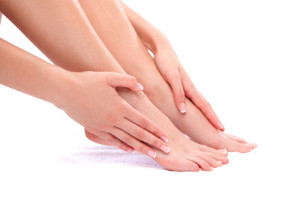 The tarsal tunnel is a canal that exists between the ligaments that spans across the foot and a portion of the ankle bone. The nerves and tendons that are inside this tunnel allow mobility and enable the foot to easily point and flex. If a specific nerve called the tibial nerve inside this canal should become compressed, typically resulting from an injury, this condition is referred to as tarsal tunnel syndrome. Having flat feet is a possible reason for this condition, causing the tibial nerve to become strained. Certain health issues, such as arthritis and diabetes, may also cause the nerve to endure swelling and increased pressure. The nerve must be allowed to heal properly, and this may be accomplished by wearing a brace or supportive shoes. The discomfort that is experienced may be indicative of other foot-related conditions, so it’s advised to consult a podiatrist for a proper diagnosis
The tarsal tunnel is a canal that exists between the ligaments that spans across the foot and a portion of the ankle bone. The nerves and tendons that are inside this tunnel allow mobility and enable the foot to easily point and flex. If a specific nerve called the tibial nerve inside this canal should become compressed, typically resulting from an injury, this condition is referred to as tarsal tunnel syndrome. Having flat feet is a possible reason for this condition, causing the tibial nerve to become strained. Certain health issues, such as arthritis and diabetes, may also cause the nerve to endure swelling and increased pressure. The nerve must be allowed to heal properly, and this may be accomplished by wearing a brace or supportive shoes. The discomfort that is experienced may be indicative of other foot-related conditions, so it’s advised to consult a podiatrist for a proper diagnosis
Tarsal tunnel syndrome can be very uncomfortable to live with. If you are experiencing tarsal tunnel syndrome, contact Dr. Barbara Kilkenny of Barbara A. Kilkenny, DPM. Our doctor can provide the care you need to keep you pain-free and on your feet.
Tarsal Tunnel Syndrome
Tarsal tunnel syndrome, which can also be called tibial nerve dysfunction, is an uncommon condition of misfiring peripheral nerves in the foot. The tibial nerve is the peripheral nerve in the leg responsible for sensation and movement of the foot and calf muscles. In tarsal tunnel syndrome, the tibial nerve is damaged, causing problems with movement and feeling in the foot of the affected leg.
Common Cause of Tarsal Tunnel Syndrome
The Effects of Tarsal Tunnel Syndrome
A physical exam of the leg can help identify the presence of tarsal tunnel syndrome. Medical tests, such as a nerve biopsy, are also used to diagnose the condition. Patients may receive physical therapy and prescriptive medication. In extreme cases, some may require surgery.
If you have any questions please feel free to contact our office located in Southbury, CT. We offer the newest diagnostic and treatment technologies for all your foot and ankle needs.
Read more about Tarsal Tunnel Syndrome